- Learning time
- 40 minutes
- First play time
- 90 minutes
Ulm
Designed by: Günter Burkhardt
Ulm‘s church is the tallest in the world, and it forms the centrepiece of the game, where you the players are trying to assert the most political and cultural influence on the city, represented in the form of victory points.
The board is placed centrally showing the city of Ulm, and there are two elements of it that form the crux of the game. One is the River Danube: your boats start at the western end, and progress eastwards during the game. This not only represents points (the further east you are, the more points you get at game end) but also what city quarters you can influence as you travel.
The other part of the game is the ‘cathedral’ square: actually a 3×3 grid that’s filled with action tiles at the start of the game – there are five types: boats, coins, seals, grids and cards. On your turn, you take a new action tile from a cloth bag, and push it into the grid – bumping another action tile out the other end. The three action tiles you’re left with (i.e. the one you pushed in, plus the two it pushed into) will be your actions this turn: you might move your boat down the river, pick up a coin, spend coins to place a seal (more on that in a moment), pick up action tiles that have been bumped out of the grid, or spend action tiles to pick up cards.
Each card can be used one of two ways – either as a little in-game booster (points/coins/other) or to score more points at the end of the game. In either case the card must be played to the table face-up, and you can only play one card on your turn.
Placing seals is a way of getting points or other in-play benefits such as coins during play – having paid the cost, you can place a seal in any city quarter your boat is adjacent to: so keep in mind where your boat is! All the city quarters function in different ways, but are essentially doing the same job of boosting your prestige in the city – either by placing a seal there, or by taking possession of the quarter, which scores you points when any player goes there.
That’s the meat of the game – there are one or two other elements, such as the round markers which give each round a special circumstance for all players; usually beneficial, but sometimes punitive. And each player also has sparrows that function as action tile jokers: helpful during play, but also worth a point at the end if you haven’t spent them. After ten rounds scores are totted up including position of boats on the river, any sparrow tiles, and cards in front you. Most points – wins.
The guru's verdict
-
Take That!
Take That!
It's not a dominant feature of the game, but canny play on the grid and the city itself can affect other players.
-
Fidget Factor!
Fidget Factor!
Ulm isn't really a game for nippers, but once older players are familiar with it it can zip along speedily enough. That first play will require some patience though, as you need to check what the city quarters do.
-
Brain Burn!
Brain Burn!
There is a little bit of burning here: the game is more tactical than strategic, as you can't really plan your turn definitely until it arrives and you draw a tile from the bag. But it's not a tsunami of decision-making.
-
Again Again!
Again Again!
Cards and tiles are drawn randomly, and there are variations in strategy too: to race along the river, or concentrate on picking up cards?

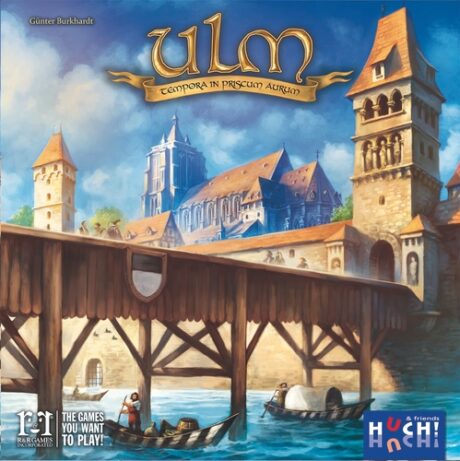
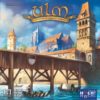
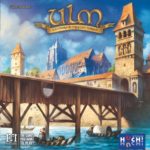

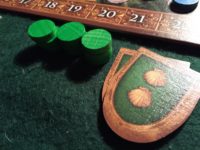

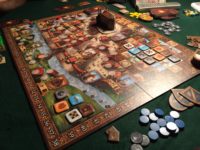



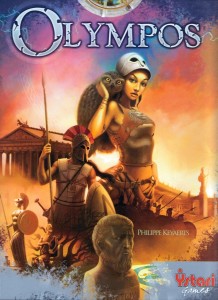
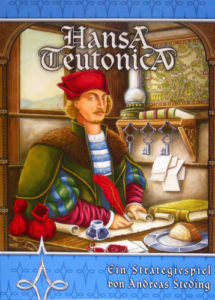
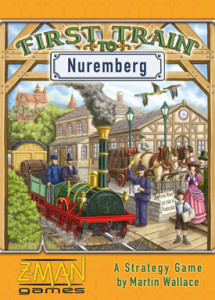
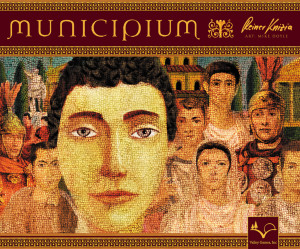
Sam says
Although I doubt medieval barons jostled for political clout in this way, I love the way the action tile grid facilitates play here and the fact Ulm forces you to think on your feet - you might be desperate for a particular tile to come out the bag, and when it doesn't you need a Plan B. What takes away from the experience a bit is the board - it's very pretty, but the round markers are fiddly and unless you know the game well, you need to keep referencing the rulebook to check what all the city quarters do. So not a game to welcome new or tentative gamers into the modern hobby, but a good one nonetheless.